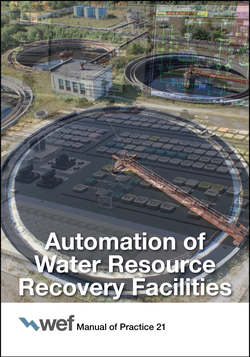Читать книгу Automation of Water Resource Recovery Facilities - Water Environment Federation - Страница 58
1.3 Detailed Design Phase
ОглавлениеDuring the detailed design phase, the design team should develop process flow diagrams (PFDs) followed by process and instrument diagrams (P&IDs). Process and instrument diagrams are typically the first design drawings completed and serve as blueprints for the more detailed work in the final design phase. An excellent tool and starting point for any design is the P&ID, a schematic diagram showing significant components of a process or processes, interconnections among them, instruments, measuring points, and control elements. If the designers can reach a consensus on these significant design components, much of the rest of the design is straightforward and simplified.
At this stage of design, detailed PCN development should proceed. This can be done concurrently with P&IDs because PCNs will themselves affect I&C system design, including panels, instruments, hardware, software, and so on. Owners must be involved in P&ID development because the control strategies shown on these drawings will directly affect WRRF operations. (For more a more detailed presentation of P&IDs, see Chapter 4.)
Electrical designers are typically also involved in this phase because of the numerous interactions between control and electrical systems. Elementary wiring diagrams (EWDs) are often developed simultaneously with P&IDs (typically, 60% phase). Preliminary EWDs can begin in the early stages of P&ID development; however, they cannot be completed until the P&IDs have progressed to at least a 60% level.
Other design documents, such as input/output (I/O) and instrument lists, are generated directly from P&IDs. They might be completed now or during the final design phase. The owner should approve these documents before the start of the final design phase.
